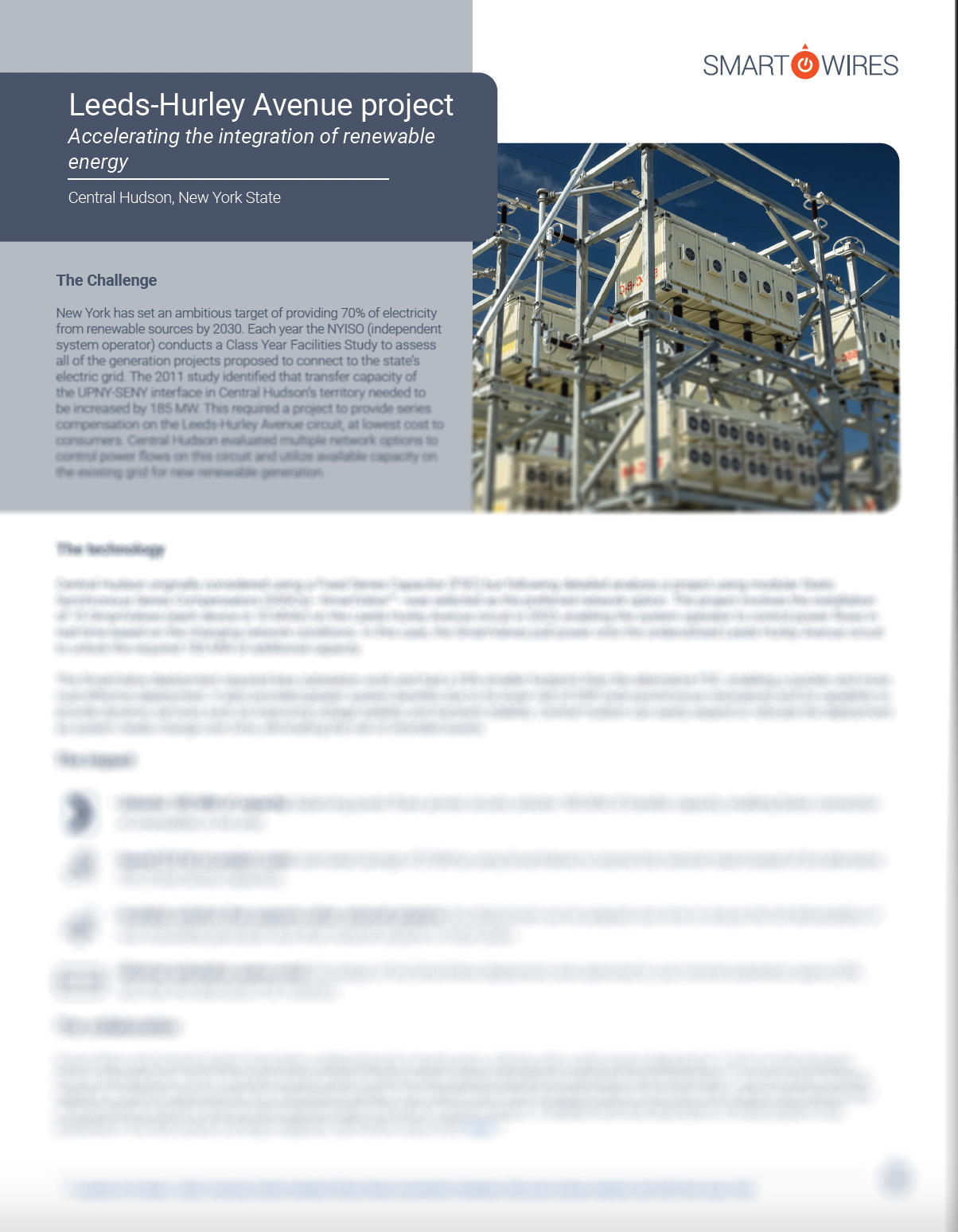Download now
Leeds-Hurley Avenue project: Accelerating the integration of renewable energy
Download Case Study


New York aims to achieve 70% of electricity from renewable sources by 2030. Each year the NYISO conducts an annual study to assess proposed generation projects connecting to the state’s grid. In 2011, the study revealed a need to increase the transfer capacity of the UPNY-SENY interface in Central Hudson’s territory by 185 MW. Central Hudson considered various network options, including the use of a Fixed Series Reactor (FSC). Following detailed evaluation, modular Static Synchronous Series Compensators (SSSCs)—SmartValve™—were selected as the preferred network option for controlling power flows on the Leeds-Hurley Avenue circuit to unlock 185 MW of transmission capacity. The SmartValve deployment offered advantages such as reduced substation work, lower overall project cost, a smaller footprint, and lower risk of sub-synchronous resonance. Additionally, as SmartValves are modular, Central Hudson can easily expand or relocate the deployment as system needs change over time, eliminating the risk of stranded assets.




Download now
